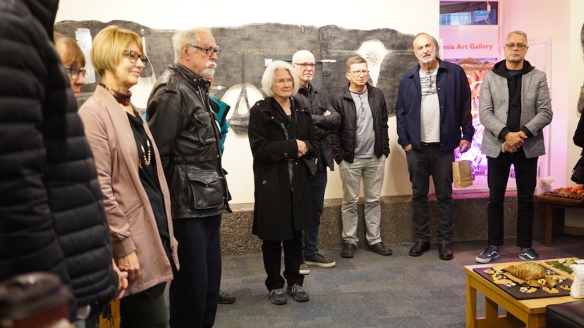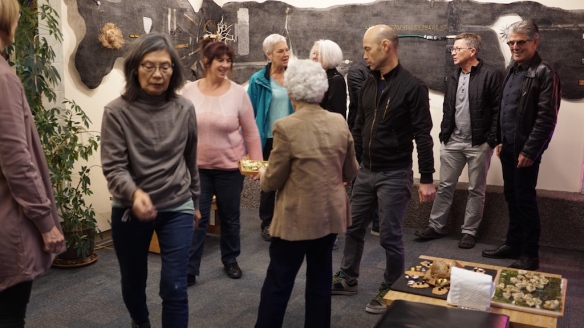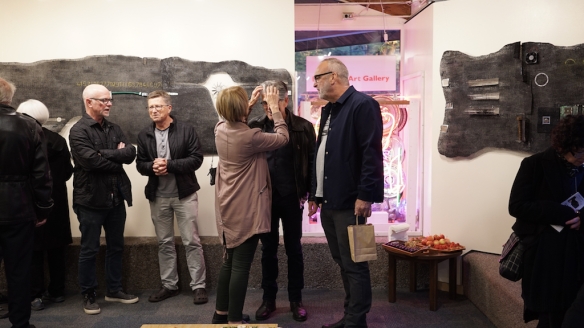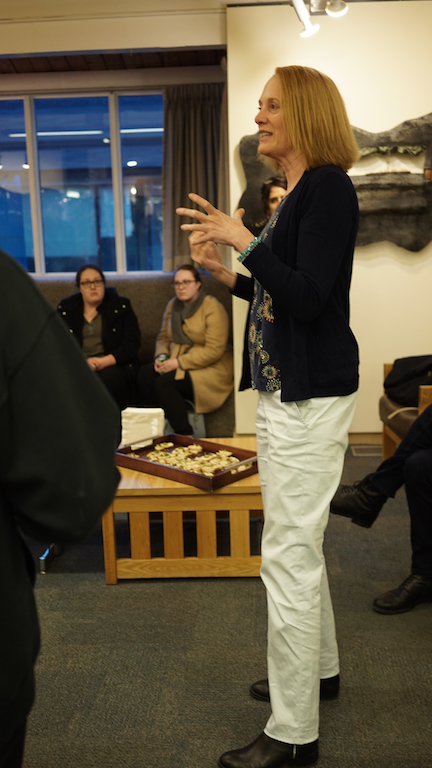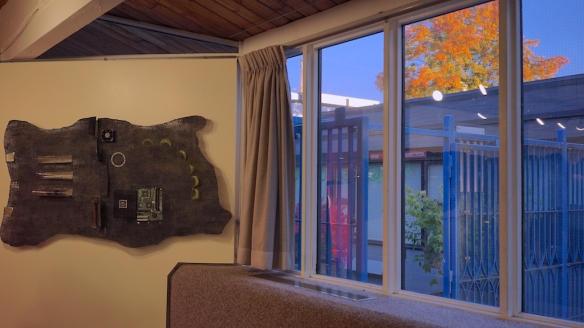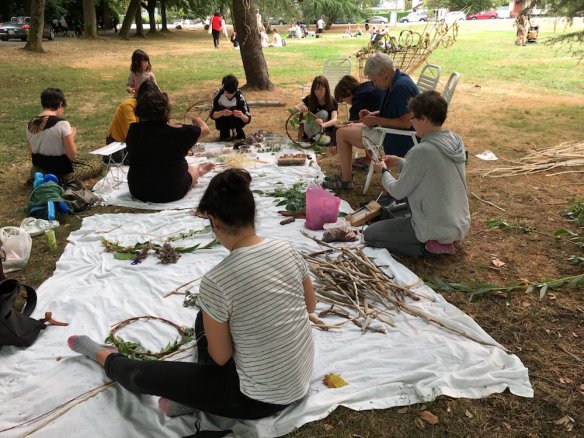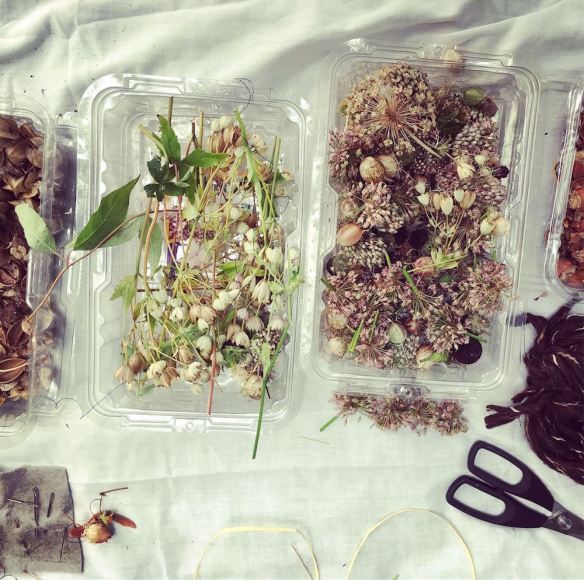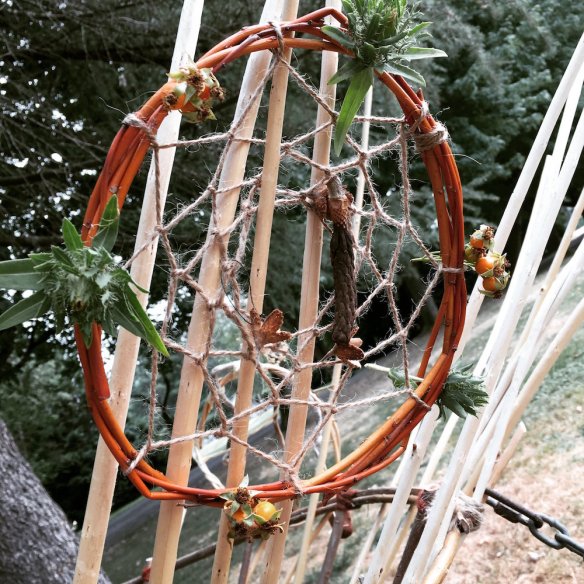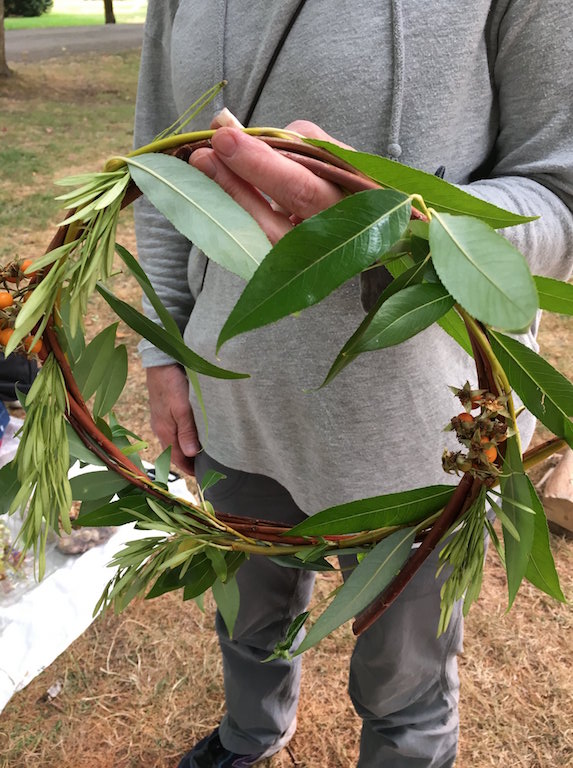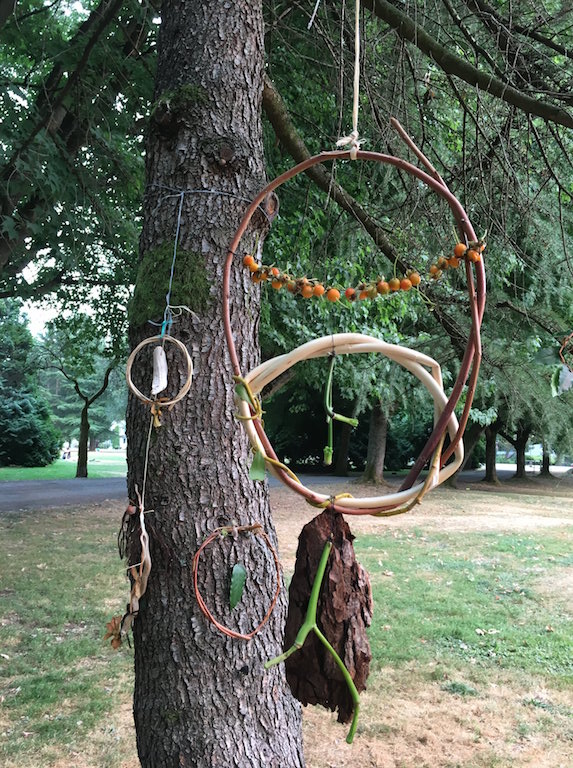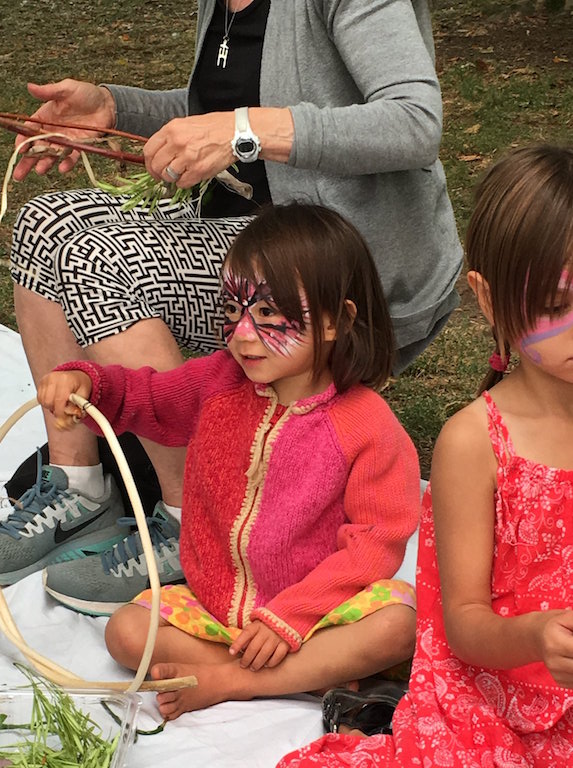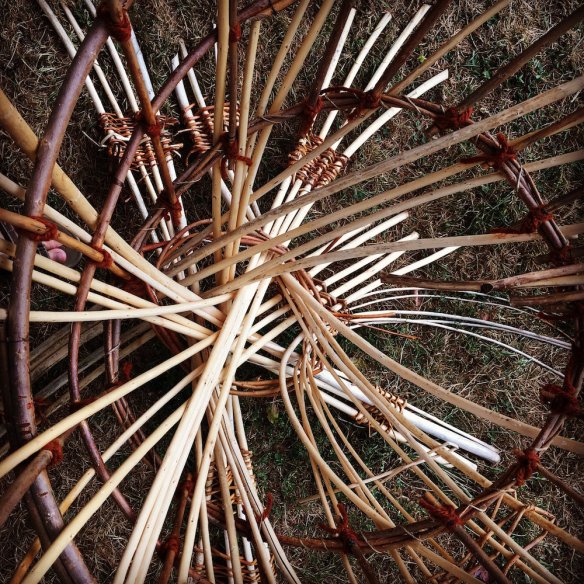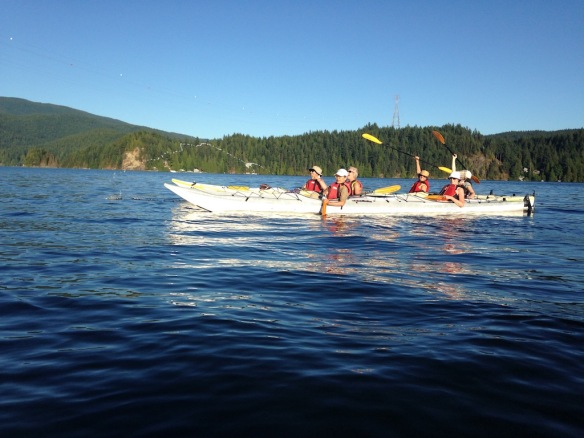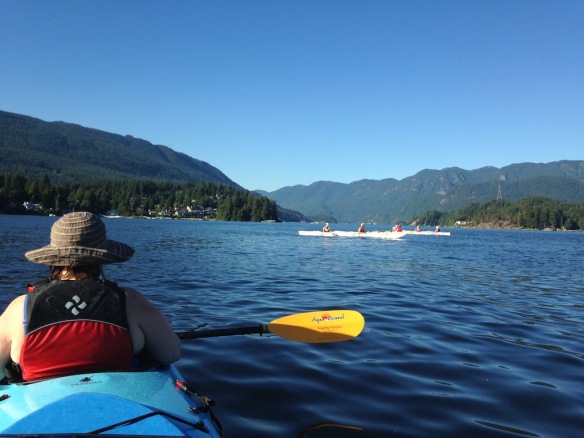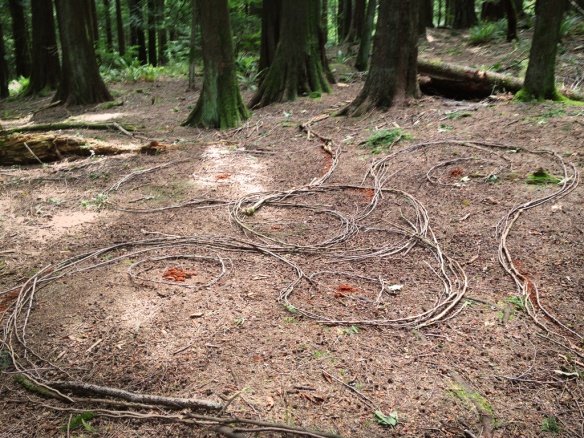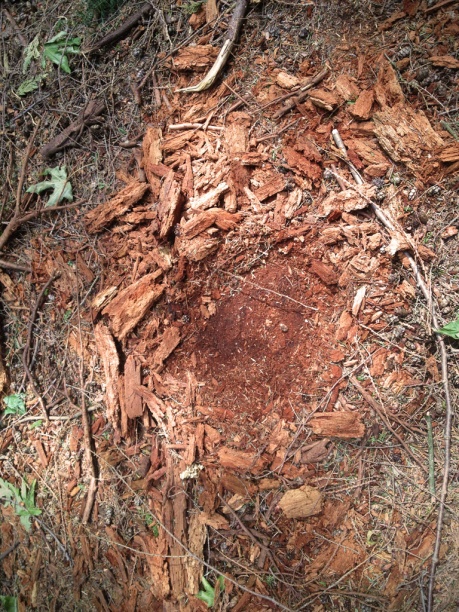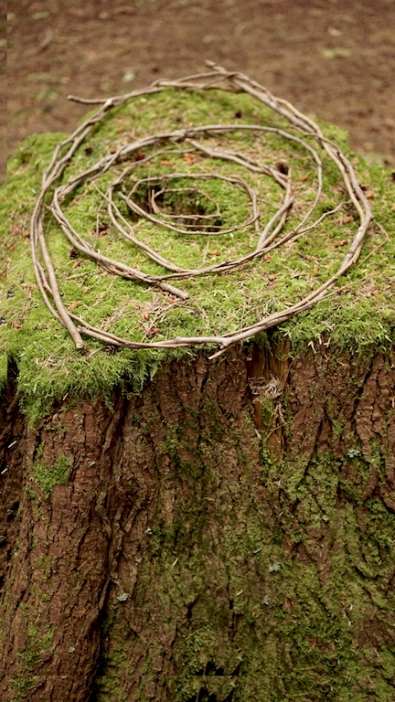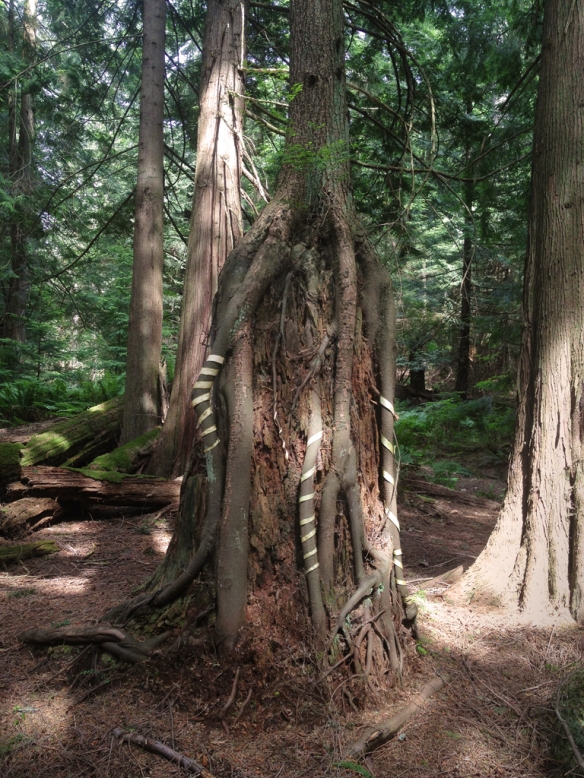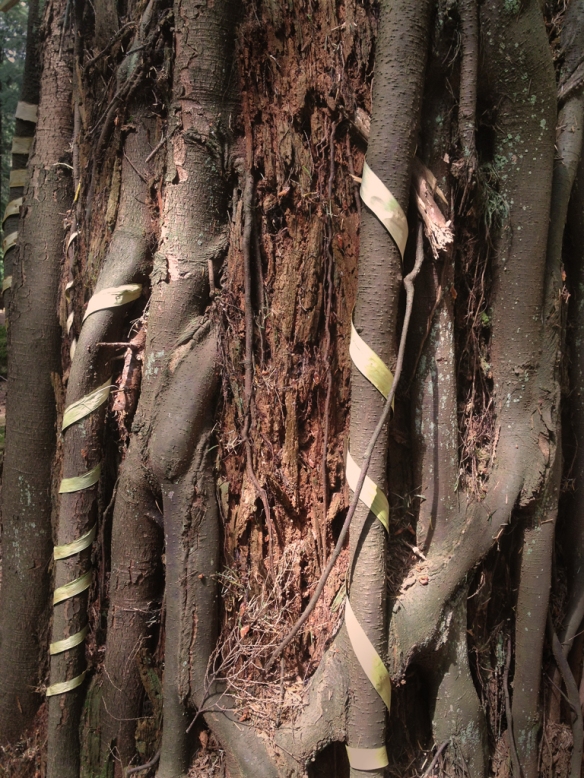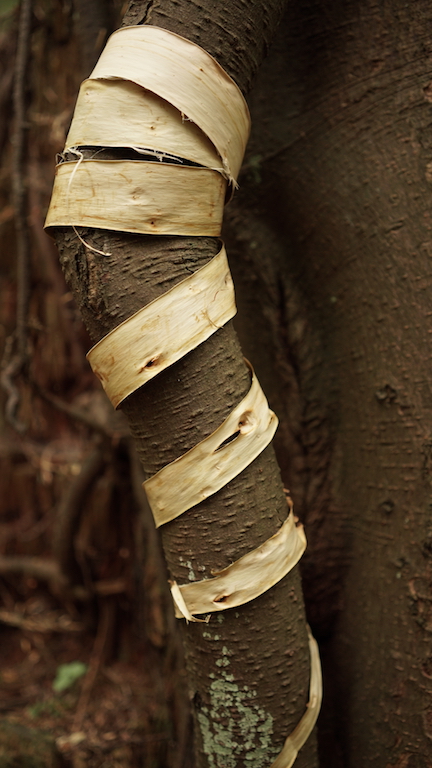
The title for our installation describes a narrative of the land, the impact of human activity on the earth and subsequently, on our climate. In our process, we have adopted the term Anthropocene. Coined by the scientific community, it describes the proposed geological time period dating from the commencement of significant human impact on the earth’s geology and ecology, to the present. Working within interpretations of fiction and Anthropocene, we set outto work collaborativelyas six sculptors making up Art is Land Network. The material substrate chosen was an ample supply of recycled wire mesh (hardware cloth) coated with black painted cheesecloth. As ubiquitous materials of the built and domestic environment, they contribute to the fiction of our invention and fabrication.
The Anthropocene includes mass extinction of plant and animals species, pollution and atmospheric change. Biological alterations, land-use change, energy footprints and alienation from the natural world are other manifestations. Through the juxtaposition of ideas, F I C T I O N expresses concerns for these impacts. Using aspects of the materiality of language, cultural mark making, text, object manipulation and layering, we trigger meanings and references. Curving the shapes of the background panels, they resemble old maps or stretched hides. Cutting into their surfaces, making additions, taking away, working with pattern and repetition, narratives evolve. Animal or plant forms morph into abstract shapes, architectural details become geometric relief, or vice versa. Mimicking the adaptive strategies of life forms, our collective story involves improvisation.
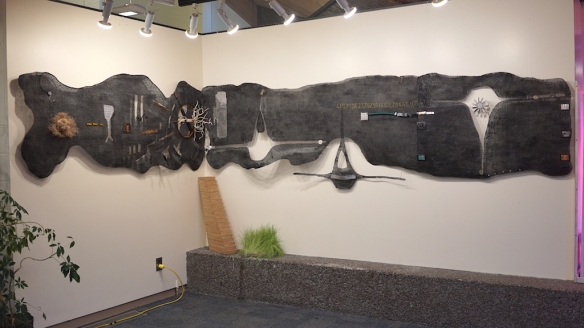
A framework for collaboration is to find resolution through deciding where to push and when to hold back. There is a sense that the balance ofchaos and control is not completely in your hands when another can intercept with a gesture or a phrase that sends the work off in another direction, injecting newness. Whether you decide to go this route or simply incorporate something of its insight, keeps the process simultaneously tangible and fragile. Regrouping for consensus entails, weighing progress and appreciating what is working and why, what is not. And continuing.
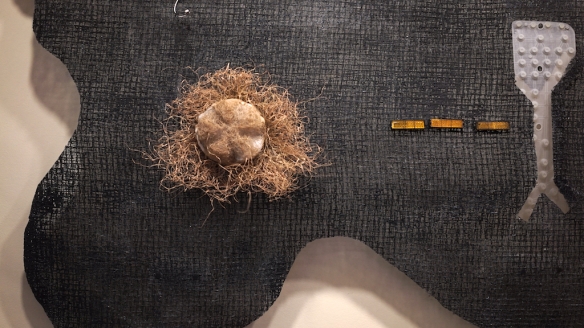
Working together is a process of learning, of not taking ownership yet still risking commitment. It involves acknowledging each other’s input and key interventions, yet letting the whole become something more than its parts. Knowledge gained lingers beyond the process of doing. It is a lesson in art making and to living in sustainable communion with the earth.
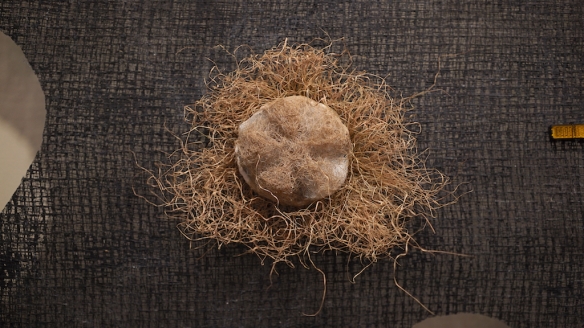

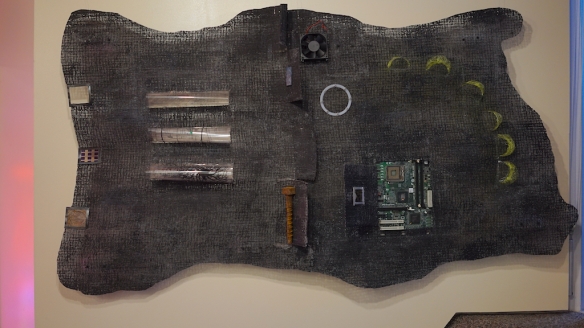
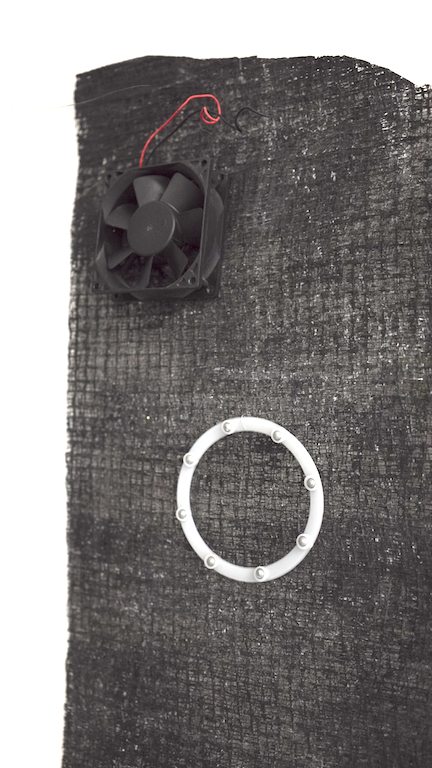
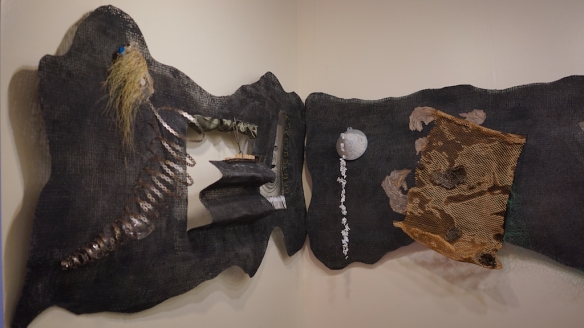
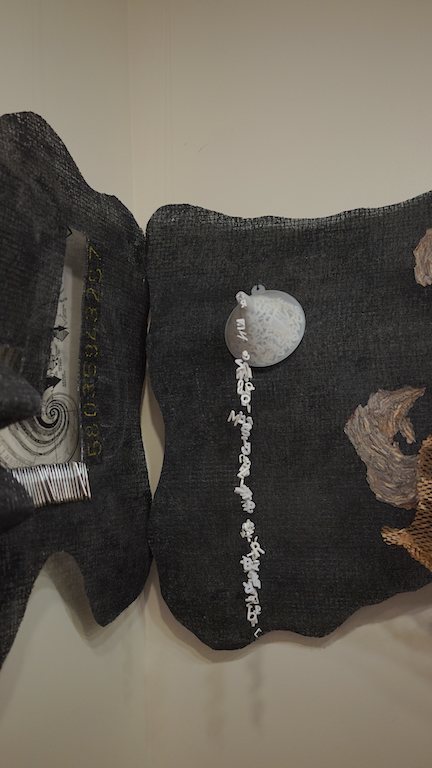
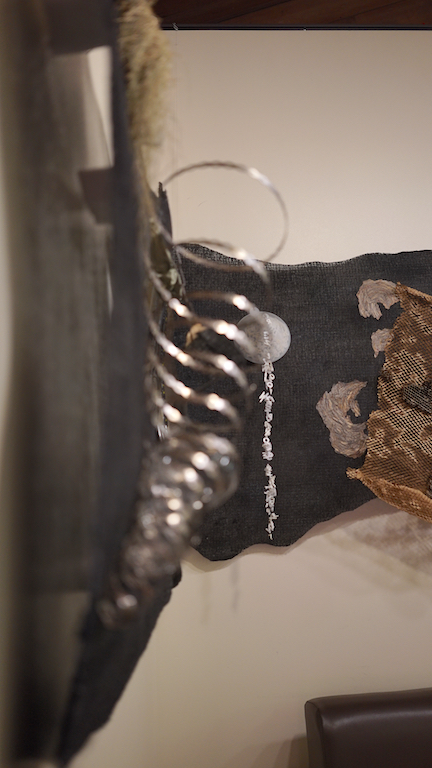

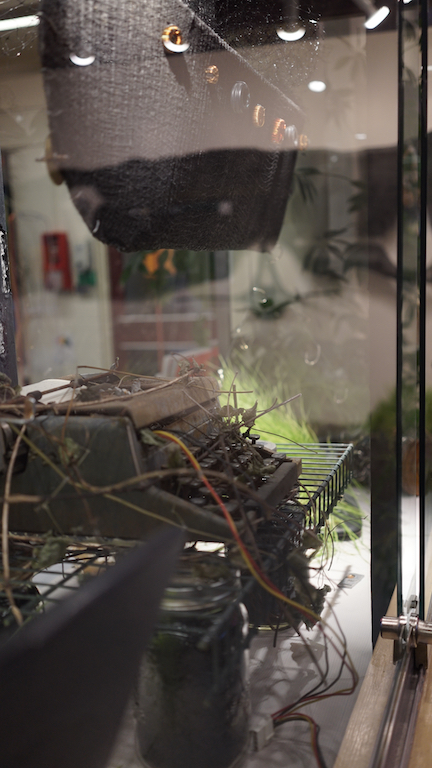

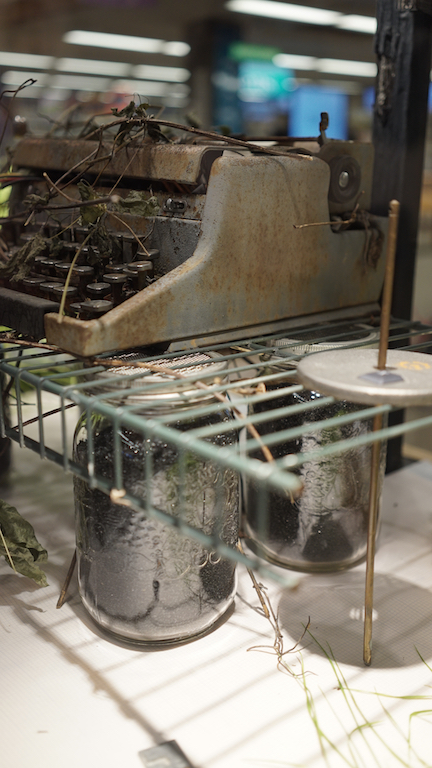
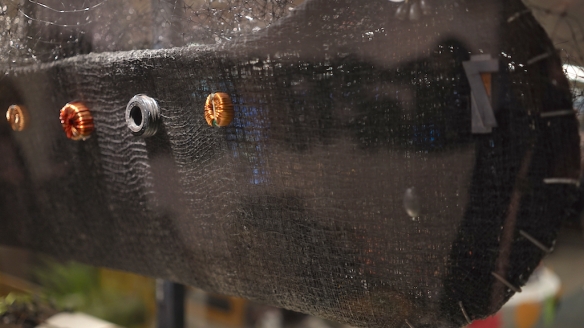
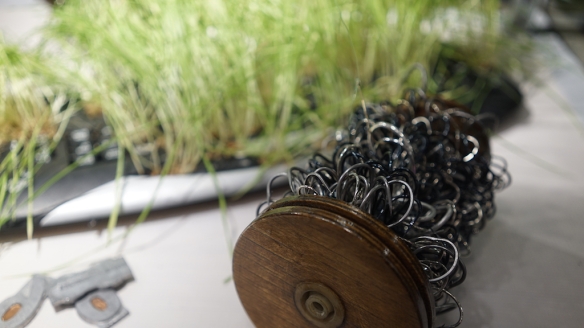


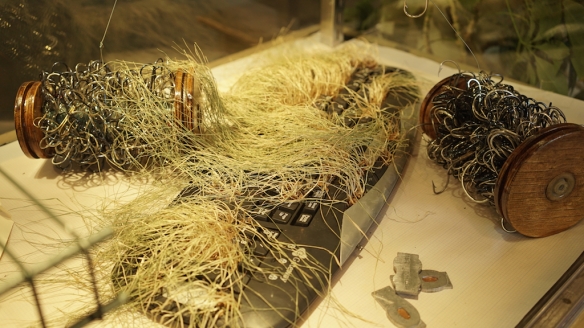
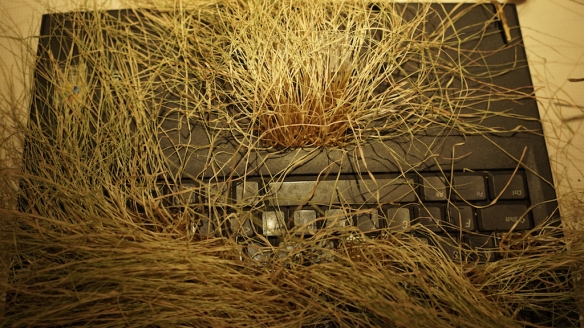
Opening October 3
